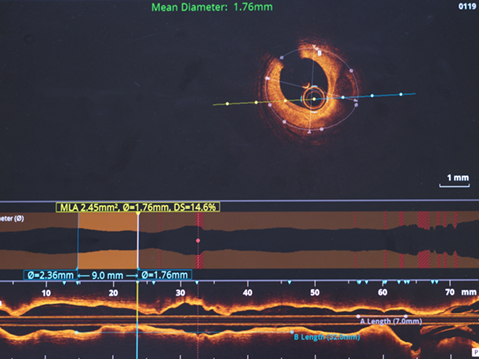

A choroidal nevus is a common, benign, pigmented growth similar to a mole on your skin, which happens to be located beneath the retina. As your skin has pigmented cells (called melanocytes), so does the layer underneath the retina, called the choroid.
Moreover, as your skin can have a mole or freckle which is a collection of those melanocytes, you can also have a collection of these cells inside or on your eye. This is called a nevus (nevi for plural).
These nevi are common. It is estimated that somewhere between 6-7% of the Caucasian population will have a choroidal nevus, and Caucasian people are more likely to develop nevi than other races. Most nevi are either present at birth, or develop by 20 years of age.
A nevus can occur on any part of the eye, including on the white part (conjunctiva), on the iris (the colored part of your eye), or on the eyelid skin. Similar to any skin freckles these nevi tend to be harmless. However, it is important to follow up regularly and monitor the nevus for growth as it can become malignant (just like some moles on the skin). This can happen without any symptoms at all, which is why regular eye exams with your ophthalmologist are so important!
Using a special camera, which will allow him/her to follow it throughout the years. Moreover, a careful examination will help your ophthalmologist determine if there are any characteristics that could suggest a higher risk of melanoma. Obtaining photos can help ensure that there is no significant change of these characteristics or the appearance of the nevus itself.
Based on the size and characteristics of your nevus, your ophthalmologist may consider other tests, including:
- Optical Coherence Tomography (OCT), a scan of the retina to evaluate the architecture of the lesion and the overlying retina.
- Ultrasound (B-scan), a very precise technique to look at its characteristics using sound waves.
- Fluorescein angiography (FA), a photo test using special light rays to visualize the blood flow of the nevus and/or the related retina.
These tests and the examination findings together will help your ophthalmologist in determining your risk and will help him/her follow your nevus to ensure that there is no cancer development.
